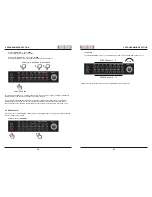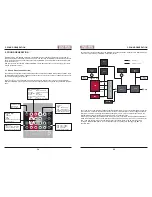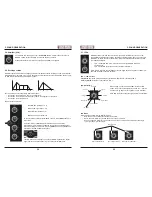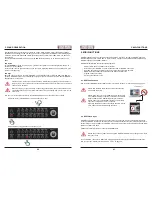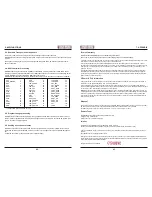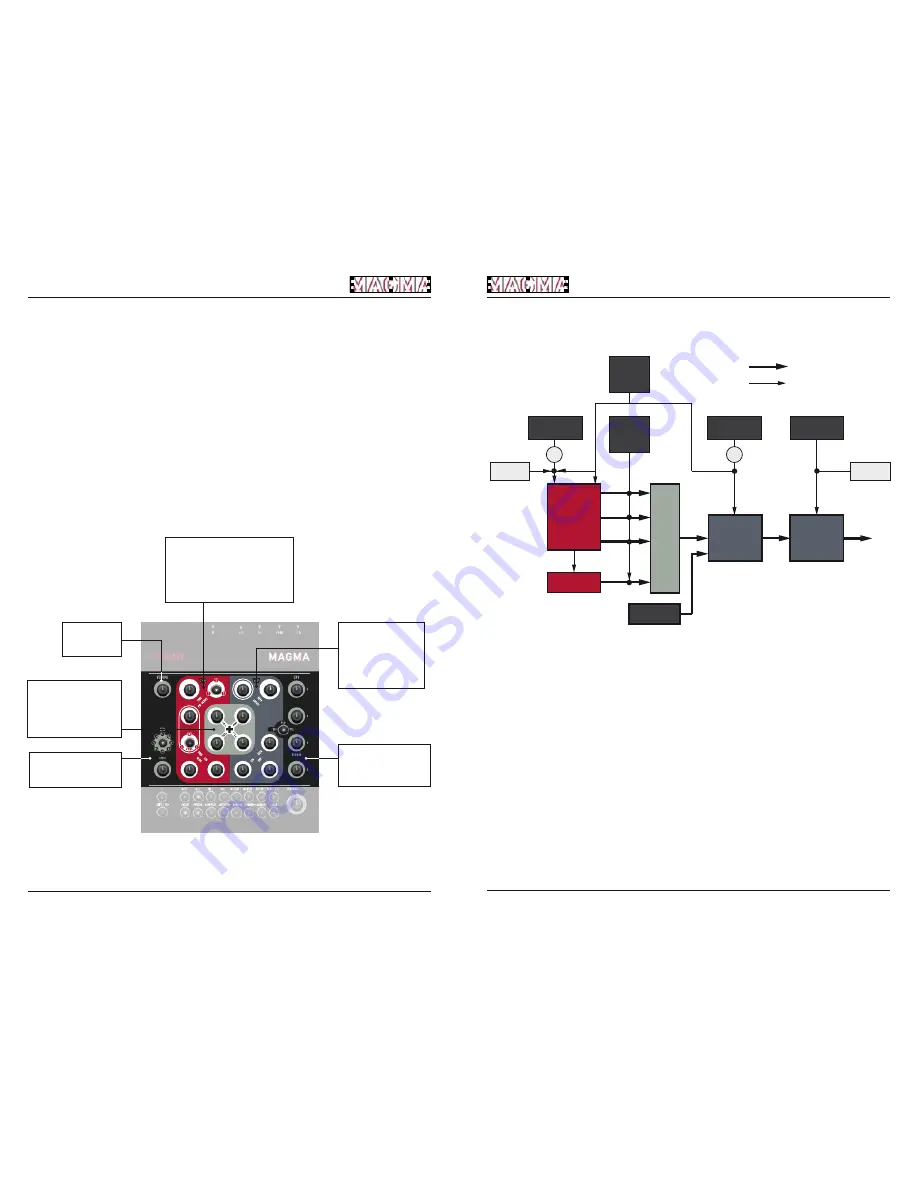
34
35
5. SOUND GENERATION
5. SOUND GENERATION
5. SOUND GENERATION
MAGMA sports a fully-fledged monophonic synthesiser with fully analogue signal path – best suited for
powerful synthesiser hook-lines, melodies, and bass. The best way for MAGMA to unfold its sonic potential
lies in conjunction with its on-board sequencer. Playing MAGMA via an external MIDI device will also yield
great results, though.
Now that you have successfully managed MAGMA´s menu-based functions, you will easily get your teeth
into the synthesiser section.
5.1. Sound Generation Overview
The following two figures will briefly display all sections and functions of MAGMA´s sound generation. More
detailed explanations will follow, please be patient. Please do not forget to carry on reading since the panel
has some interesting secrets to hide.
Most – but not all – of the pots (there, we said it again!) have direct access to just one single parameter,
labelled on MAGMA´s control panel. The buttons have several settings, displayed by specific LED combina-
tions.
This is what‘s to be found under the hood of MAGMA´s sound generation. All sections are labelled in a spe-
cific colour, corresponding to MAGMA´s front-panel layout.
The sound sources comprise the voltage-controlled oscillator (VCO) and a sub-oscillator (SUB), phase-syn-
ced to the VCO. They both send their waveforms into the mixer and further on into the voltage-controlled
filter (VCF) as well as the voltage-controlled amplifier (VCA). There is also an external input fed into the
filter/amplifier section (for processing external signals, more about this later).
Have a closer look at the two envelopes and the way they are connected to their modulation destinations:
ENV2 controls the VCA, ENV1 can be inverted and controls VCF and VCO pitch. LFO 2 controls the mixer,
LFO 1 has a go at VCO pitch as well as pulse-width of the square-wave. It can be inverted as well.
Finally, we find MIDI data (that is, the on-board sequencer) controlling pitch and triggering ENV 2 to
generate notes.
A N A L O G U E B A S S L I N E S Y N T H E S I Z E R
VCA
• VOLUME: Output
Modulation from
ENV1 / Velocity
LFOs 1 + 2
• LFO 1: to VCO, VCF, PWM
• LFO 2: to waveform mixer
8 waveforms at 3 stages each
ENVELOPES 1 - 3
• ENV 1: VCA (ADSR)
• ENV 2: VCF (ADSR)
• ENV 3: Pitch (AD)
Inverse-function for ENV 2, 3
VCO
(with Suboscillator)
• TUNE: Global / detune SUB
• OCTAVE: 8 settings for VCO / SUB
• PULSWIDTH: Manual
• SYNC: VCO to SUB
• SYNC L/M/E: 6 settings for PWM
• GLIDE: Time
• LFO:
Mod-Amt for LFO 1 (Pitch)
Waveform Mixer
• SAW
• SQUARE
• SUB
• NOISE
individual LFO2 mod-amounts
for all waveforms
VCF
(24dB Lowpass)
• CUTOFF
• RESO
• LFO: Mod-Amt LFO 1
• ENV: Mod-Amt ENV 2
• KEYB: Mod-Amt KB-Track
External input gain setting
on backside
VCO
VCF
VCA
SUB
OUT
EXT. IN
W
A
VE
FO
R
M-M
I
XE
R
Sync
Saw
Square
Square
Noise
ENV 3
(AD)
ENV 2
(ADSR)
ENV 1
(ADSR)
Inv
Inv
LFO 2
LFO 1
MIDI
Velocity
MIDI
Note
Pitch PWM
Audiosignal
Modulation / Control
Содержание EOwave
Страница 23: ......














